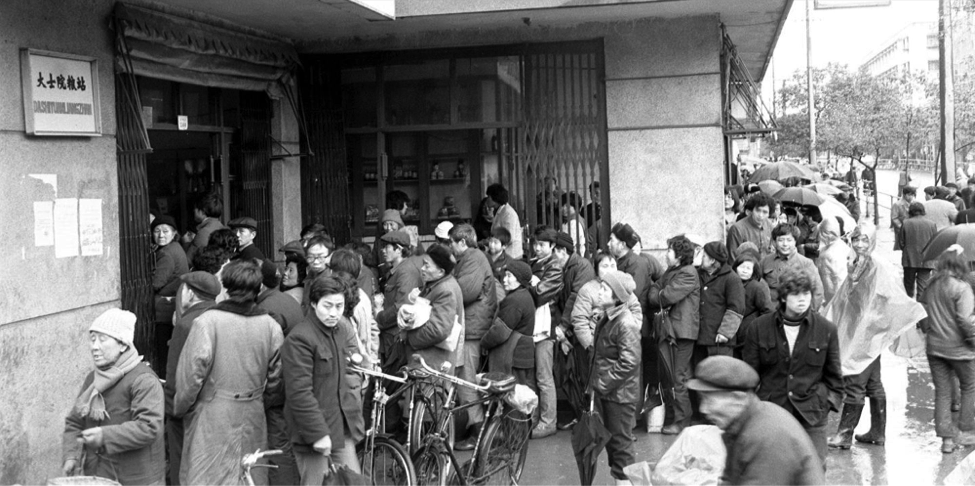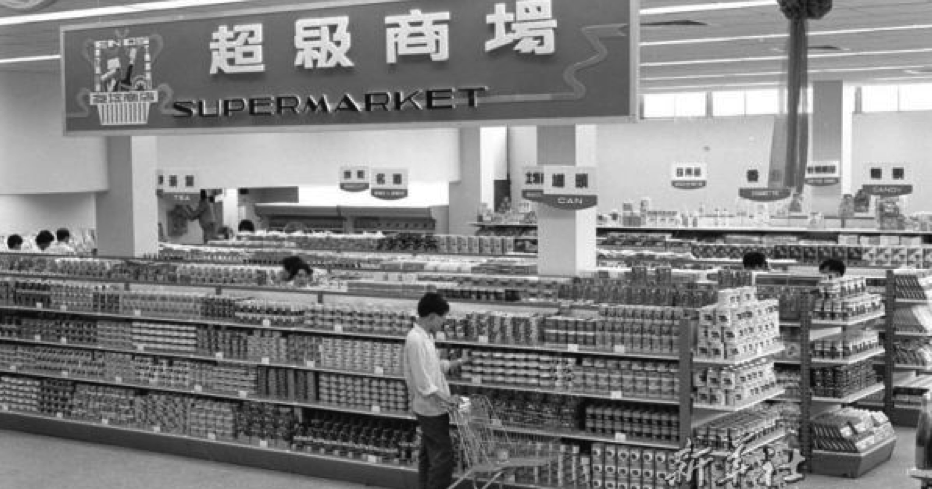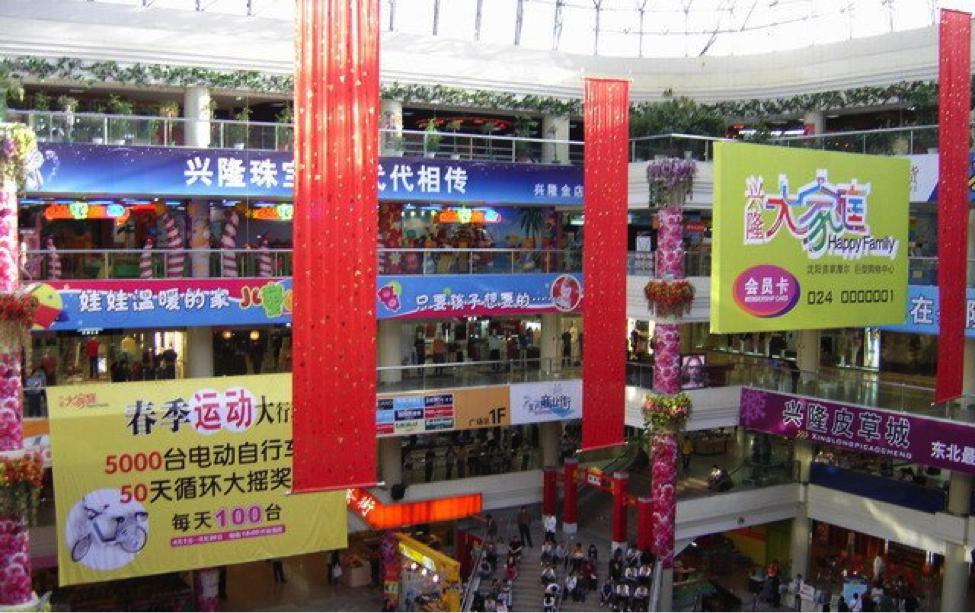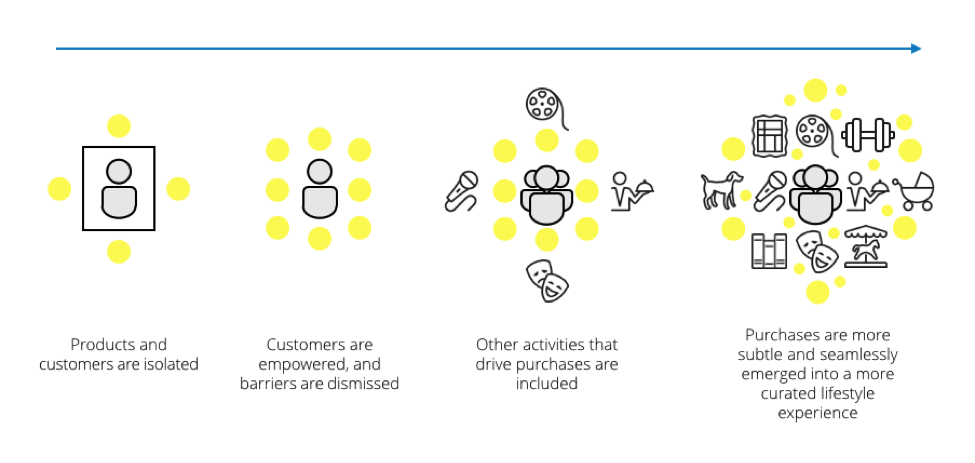
China's Brick and Mortar Revolution: From Soy Sauce Food Stamps to Experience Hubs
I grew up in the planned economy of Communist China in the early 1980s. On my 5th birthday, my parents gave me my first food stamp and said “Boy, you’re old enough to go and buy soy sauce”. This might seem trivial, but in China it was a big deal—a coming of age of sorts.
There’s a lot to learn from China’s speedy retail revolution. From the food stamps of the '80s to the mega lifestyle centers of today, retail trends that manifested over hundreds of years in the western world unfolded in China in a much shorter time period.
Soy sauce station, 1987
In Communist China, food stamps were reserved for special ingredients, like candy, chocolate and soy sauce.
Like a good boy, I trudged down excitedly to the soy sauce station. All the products were hidden behind a wooden screen. Frankly, the employees were often serious and cold. Urging myself to speak up, I stood on my tip toes, and said politely “Can I please have a bottle of soy sauce”. The employee was the gatekeeper of the experience, they could decide whether they wanted to give you the soy sauce or not.

Above: 1988, citizens in Nanchang, Jiangxi Province, lining up to buy 10 kilograms of rice with their February food stamp.
Notice the abundance of barriers in the shopping experience. No looking, no touching, and absolutely no tasting. Customers had zero control over their own experience.
My first supermarket experience, 1992
In the early 1990s, significant economic reforms began to transform the everyday lives of Chinese people. We stopped using food stamps
I took a routine Saturday trip to my favourite bookstore. That day, I laid eyes on my first ever supermarket, and gawked with amazement. ‘Supermarket’ in Chinese was a totally new word. I wondered what it meant. Superhero? Super what?
I walked in and definitely felt super. It seemed incredible that you could touch and buy anything. The whole of China went crazy about the idea.

Above: The first supermarket in Canton, Guangdong Province.
Power was shifting towards the customer. Shoppers now had more choice and could shop based on what they actually wanted to buy.
First date in a shopping mall, 2001
By 2001, malls had become the destination of choice for youths to spend time with family and friends. They were so in vogue that I chose one of Chengdu’s first malls as the ideal destination for my first date. I picked up some ice cream and pondered nervously what we would do that day. The possibilities were many—shop, eat, drink, play arcade games or see a movie.
Contrast the mall visit to my food stamp shopping experience. Where I was tense, unempowered and uninspired while shopping for soy sauce, in that shiny new mall I felt excited, inspired and emotional. Shopping for soy sauce was complete in two minutes, but in the mall I often spent six hours.

Above: 2011, Xinlong Mall, Shenyang, Liaoning Province
Even the supermarket felt bland in comparison. Supermarkets were a highly individualized shopping experience, but the focus was shifting to creating a comfortable place where shoppers are happy to spend their time. It went from ‘me’ to ‘we’.
Experience and Lifestyle Hub, 2015
Attending a seminar that compares Chinese philosophy to Western philosophy is not an activity associated with your average shopping mall, yet that’s exactly what I did earlier this year at Beijing’s Parkview Green complex.
Walk through the entrance, and you might think you’ve landed inside New York’s MoMa or London’s Tate Modern. Part event space, part foodie paradise, part art exhibit and part retail. Parkview Green throws out many of the conventional mainstays in retail. You won’t find a menswear floor, or a dining hall. Instead, shoppers are treated to a curated maze of discovery and transition seamlessly from admiring art installations, to shopping, eating and learning.

Above: A curated art exhibition in Beijing's Parkview Green
It’s a fine example of category convergence in retail. Rather than the transaction focused nature of a traditional shopping mall, this ‘lifestyle complex’ gives customers a million reasons to visit beyond shopping.
-
Let’s analyze the evolution in retail between each different shopping experience.
-
Soy sauce station to supermarket: Barriers between brands, products, employees and shoppers are rapidly disappearing.
-
Supermarket to shopping mall: The shopping journey is still transaction focused, but retailers start to bring other activities into the mix to encourage shoppers to spend more time around retail stores.
- From the shopping mall to the lifestyle complex: Conventional retail wisdom starts to disappear. Retailers now curate a dynamic list of events, pop up stores and exciting experiences to keep shoppers coming back - not just for shopping.

I was lucky to grow up in Communist China and witness the the shift from emotionless transactions to experience driven retail. In Western societies, retail as we know it has heralded from the 1900s. In China, the pace of change is stark.
To retailers looking to modernize and stand out in a new era of shopping, here are some key questions:
- Are there barriers that separate products, employees and customers?
- Are your customers empowered? Is it easy for them to choose their own shopping journey, or are you dictating the way they should experience the brand?
- Are there reasons to visit your store beyond the transaction?
- How much are you influencing your customer’s lifestyle? Would they be proud to announce a relationship with your brand to their friends?
Disclaimer: The statements and opinions expressed in this article are those of the author(s) and do not necessarily reflect the positions of Thoughtworks.














